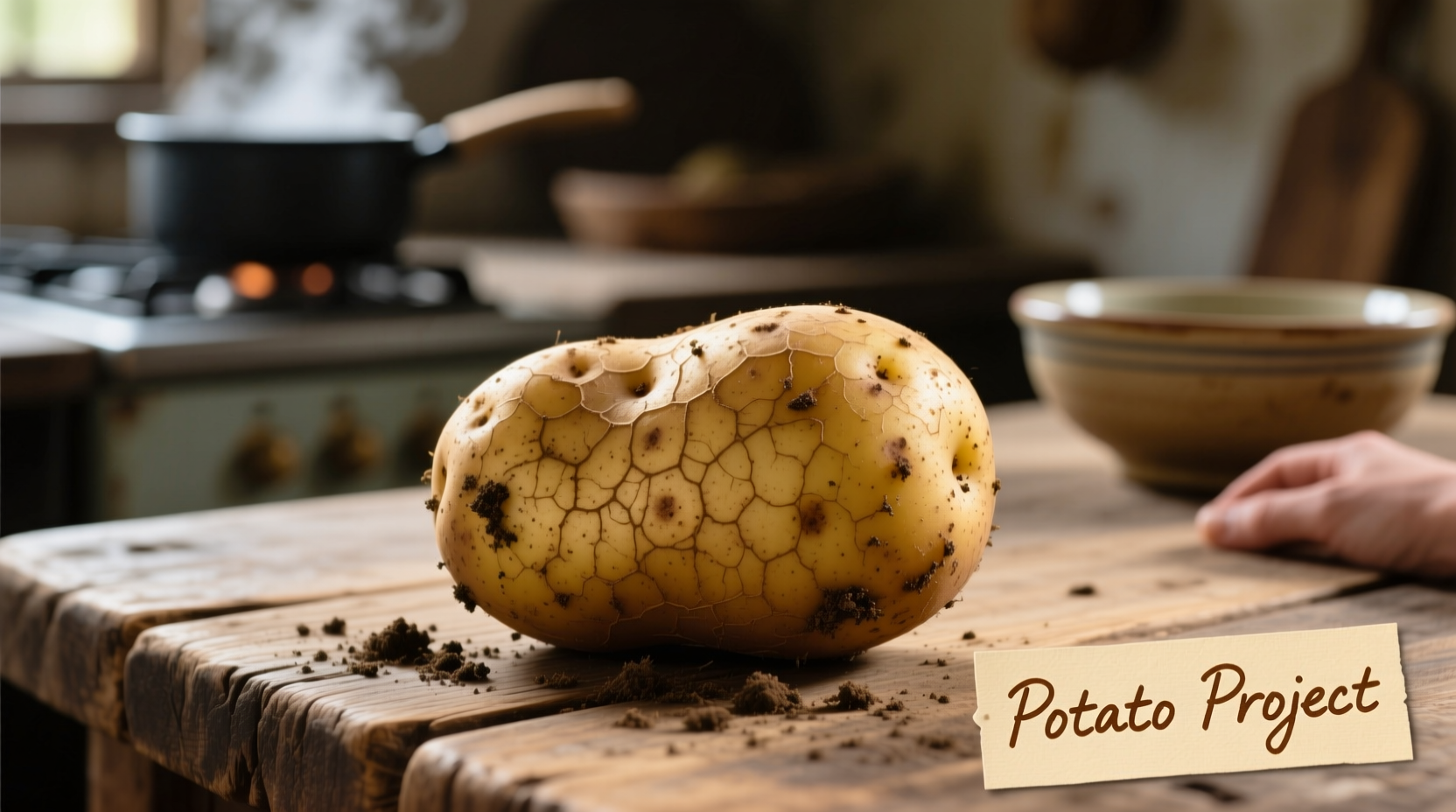When searching for "potato project," you're likely looking for practical information about community-based potato cultivation initiatives that address food security, educational goals, or sustainable agriculture. A potato project typically refers to organized efforts focused on growing potatoes for community benefit, educational purposes, or food security enhancement.
Understanding Modern Potato Projects
Today's potato projects extend far beyond simple gardening. These initiatives have evolved into sophisticated programs addressing critical global challenges while providing hands-on learning opportunities. The International Potato Center (CIP) reports that potato-based initiatives now reach over 2.5 billion people worldwide, demonstrating their growing importance in food systems.
Why Potato Projects Deliver Exceptional Value
Potatoes offer unique advantages that make them ideal for community and educational projects. With their high nutritional value, relatively short growing cycle, and adaptability to various climates, potatoes serve as perfect candidates for initiatives targeting food security and education.
| Project Type | Primary Benefit | Implementation Timeframe | Ideal Scale |
|---|---|---|---|
| Educational School Projects | STEM learning integration | 3-6 months | Classroom to school garden |
| Community Food Security | Local food production | 6-12 months | Neighborhood to city-wide |
| Sustainable Agriculture | Soil health improvement | 1-3 years | Farm to regional |
Historical Evolution of Potato Cultivation Projects
The journey of potato projects spans centuries, evolving from basic subsistence farming to sophisticated modern initiatives. Understanding this timeline provides valuable context for today's approaches:
16th Century: Following Spanish introduction of potatoes to Europe from South America, early adoption faced resistance due to unfamiliarity with the tuber. The International Potato Center documents how European monarchs eventually promoted potato cultivation to address food shortages.
19th Century: The Irish Potato Famine highlighted both the importance of potato diversity and the dangers of monoculture. This period spurred early research into disease-resistant varieties, documented by agricultural historians at the USDA National Agricultural Library.
Mid-20th Century: The Green Revolution brought scientific approaches to potato cultivation, with organizations like the International Potato Center (established 1971) leading research on improved varieties and farming techniques.
21st Century: Modern potato projects integrate technology, community engagement, and sustainability principles. According to the Food and Agriculture Organization (FAO), contemporary initiatives often combine traditional knowledge with scientific advances to address climate challenges.
Practical Implementation Framework
Launching a successful potato project requires careful planning and execution. Follow this evidence-based framework to maximize your chances of success:
Site Selection and Preparation
Choose locations with at least 6-8 hours of daily sunlight and well-draining soil. The USDA Natural Resources Conservation Service recommends conducting soil tests before planting to determine necessary amendments. Raised beds work exceptionally well for potato cultivation, improving drainage and making harvest easier.
Variety Selection Strategy
Select varieties based on your project's primary goals:
- Early-season varieties (like Yukon Gold): Ideal for educational projects with time constraints
- Disease-resistant varieties (like Defender): Best for community food security initiatives
- Heirloom varieties (like Purple Peruvian): Excellent for biodiversity and cultural education projects
Planting and Maintenance Protocol
Follow these research-backed practices from university agricultural extensions:
- Plant seed potatoes 4-6 weeks before last frost date
- Space plants 12-15 inches apart in rows 30-36 inches apart
- Hill soil around plants when they reach 8-10 inches tall
- Water consistently (1-2 inches per week), avoiding overhead watering
- Monitor for pests using integrated pest management approaches
Contextual Boundaries and Limitations
While potato projects offer numerous benefits, understanding their limitations ensures realistic expectations and proper planning:
Climate Constraints: Potatoes grow best in cool temperatures (60-70°F). The University of California Cooperative Extension notes that temperatures above 80°F can significantly reduce tuber formation. In warmer climates, consider planting as a winter crop or using shade cloth.
Soil Requirements: Potatoes require well-drained, slightly acidic soil (pH 5.0-6.0). The USDA Agricultural Research Service emphasizes that heavy clay soils increase disease risk, while sandy soils may require additional irrigation and nutrients.
Disease Management: Late blight remains a significant challenge. Cornell University's research shows that proper crop rotation (minimum 3-year cycle) reduces disease pressure by up to 70%. Avoid planting tomatoes, peppers, or eggplants in the same location.
Resource Requirements: Successful potato projects require consistent attention during the growing season. Community projects should plan for regular volunteer schedules, while educational projects need built-in maintenance protocols during school breaks.
Measuring Project Success
Establish clear metrics to evaluate your potato project's effectiveness:
Yield Metrics: Track pounds harvested per square foot. University extension data shows average yields range from 0.5-1.5 pounds per square foot depending on variety and conditions.
Educational Impact: For school projects, measure learning outcomes through pre- and post-project assessments focusing on plant biology, nutrition, and food systems understanding.
Community Engagement: Track volunteer hours, participant diversity, and food distribution metrics for community-based initiatives. Successful projects typically engage 2-3 times more participants in their second year.
Scaling Your Potato Project
As your project matures, consider these evidence-based expansion strategies:
Partner with local food banks to distribute excess harvest, creating a sustainable food access pipeline. Research from Feeding America shows that fresh produce from community gardens significantly increases food bank patron satisfaction.
Develop educational workshops around your project, teaching others propagation techniques, storage methods, and culinary uses. The National Gardening Association reports that projects offering educational components see 40% higher community participation.
Implement succession planting to extend your harvest season. By staggering plantings every 2-3 weeks, you can enjoy continuous harvests throughout the growing season.

Essential Resources for Potato Project Success
Access these authoritative resources to support your potato project:
- International Potato Center's free cultivation guides (cipotato.org)
- Local university extension services for region-specific advice
- USDA Plant Hardiness Zone Map for timing guidance
- Community gardening networks for shared resources and knowledge
Troubleshooting Common Challenges
Address these frequent potato project issues with proven solutions:
Problem: Small or misshapen tubers
Solution: Ensure consistent moisture during tuber formation and avoid over-fertilizing with nitrogen. The University of Maine Cooperative Extension recommends using balanced fertilizers with higher potassium content.
Problem: Holes in leaves indicating pest damage
Solution: Implement integrated pest management with physical barriers, beneficial insects, and targeted organic treatments. Row covers installed at planting prevent many common pests.
Problem: Low community participation
Solution: Create clear roles with varying time commitments and host regular social events around garden activities. Successful community projects often incorporate cultural celebrations tied to harvests.











 浙公网安备
33010002000092号
浙公网安备
33010002000092号 浙B2-20120091-4
浙B2-20120091-4